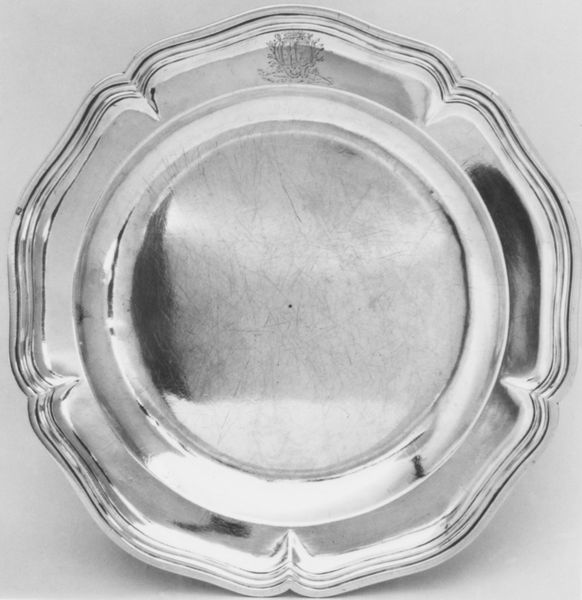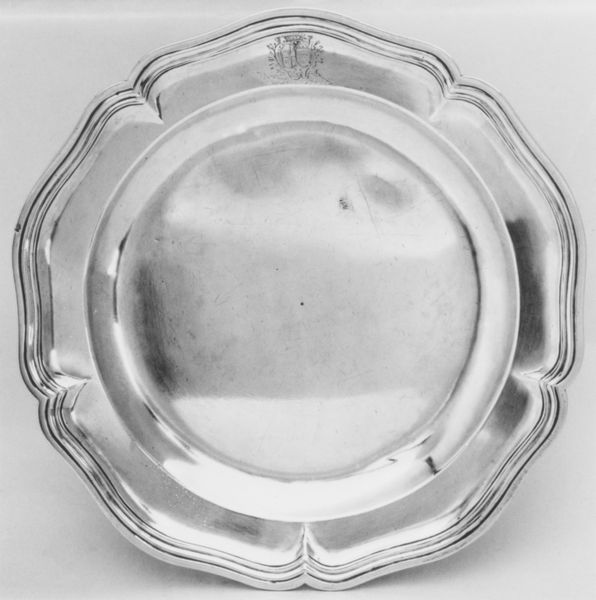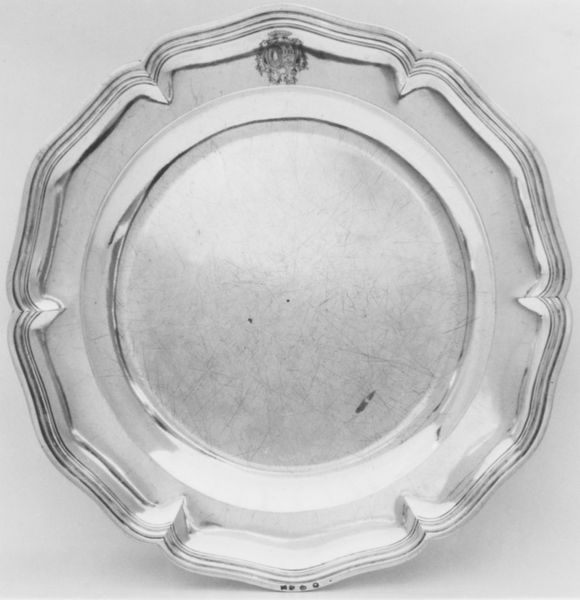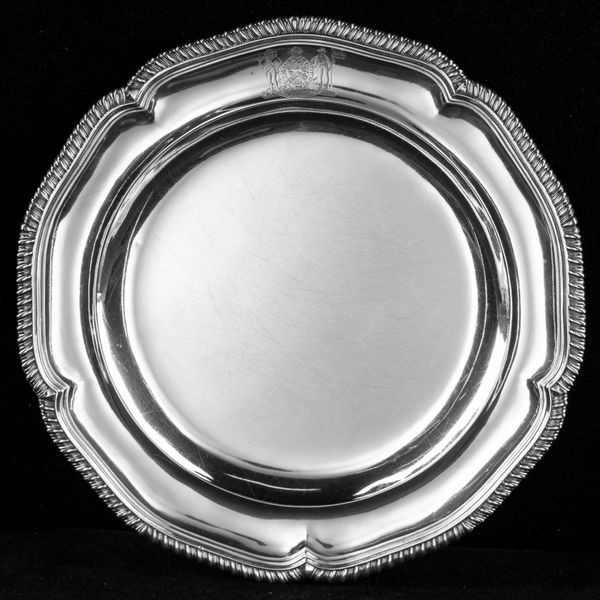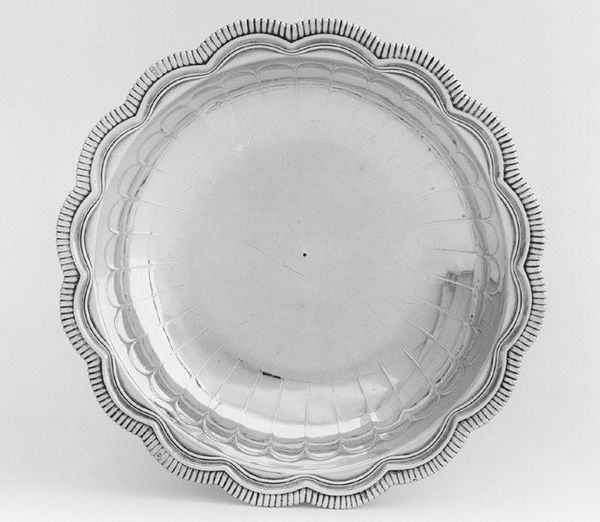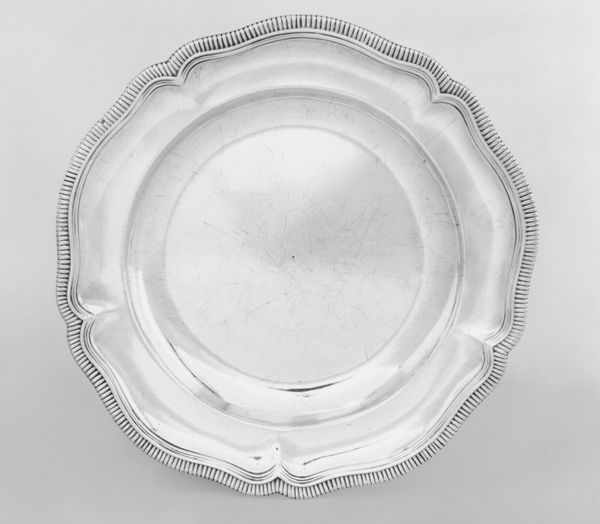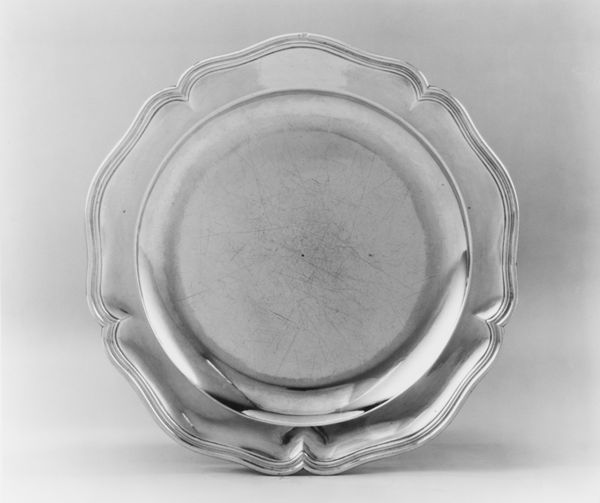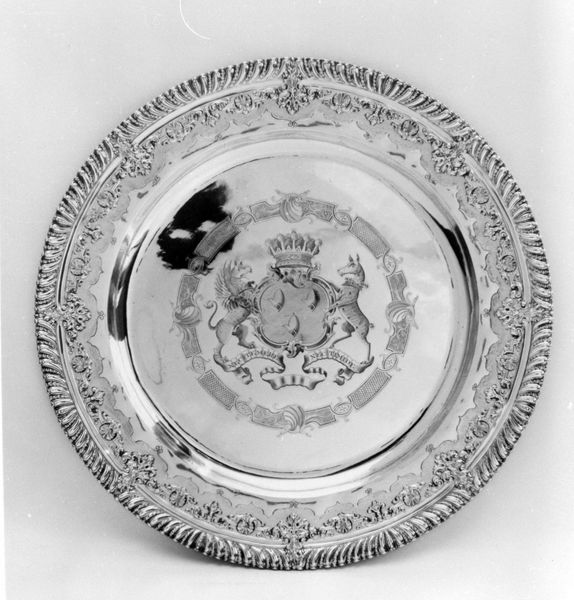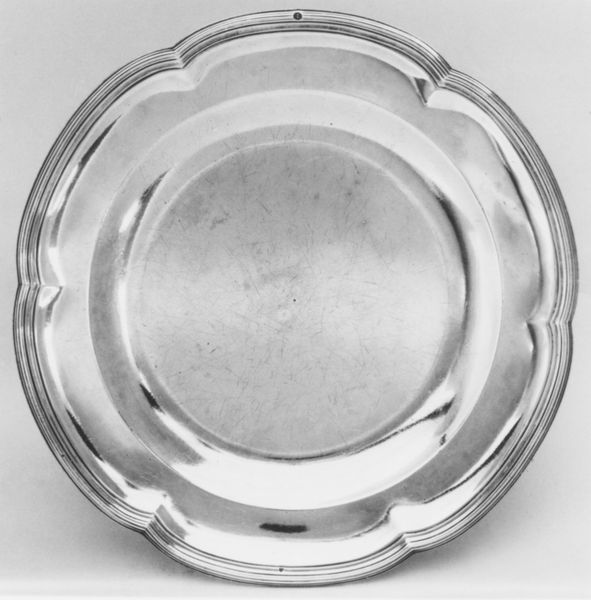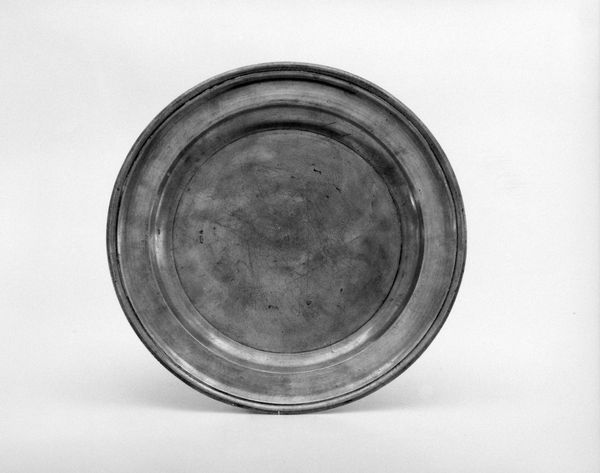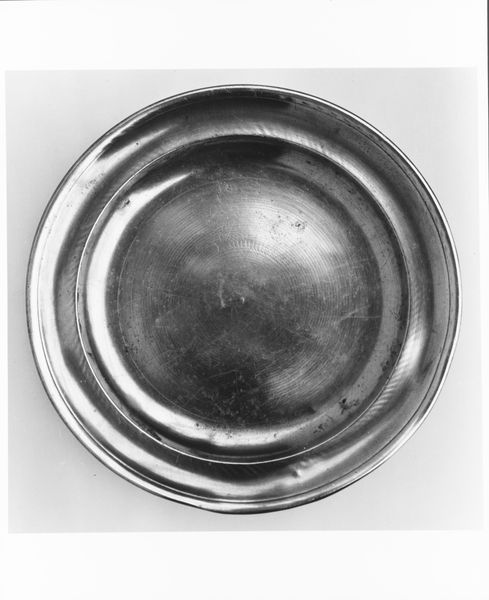
silver, sculpture
#
silver
#
sculpture
#
decorative-art
Dimensions: Diameter: 10 in. (25.4 cm)
Copyright: Public Domain
This silver plate was crafted by Edme-Pierre Balzac in the 18th century, a period when dining was elevated to an art form. The plate features a simple yet elegant design, and around the edge, there's a banded motif, reminiscent of classical architectural elements. At the bottom of the plate we can see an engraved crest enclosed by laurel leaves. These crests, often unique to a family or individual, are visual markers of identity, status, and lineage. Think of how these symbols recur throughout history. We find them on ancient Roman shields and medieval tapestries, each time serving as a potent emblem of belonging and heritage. The laurel wreath framing the crest is a timeless symbol of victory and honor. The wreath carries echoes of ancient Greece, where it was awarded to triumphant athletes and heroes. In this context, the wreath perhaps served a dual purpose: to aggrandize the family name and evoke feelings of reverence for those who came before. Like images, crests are powerful cultural artifacts that have been passed down through time, evolving to reflect the unique narratives of different cultures.
Comments
No comments
Be the first to comment and join the conversation on the ultimate creative platform.
